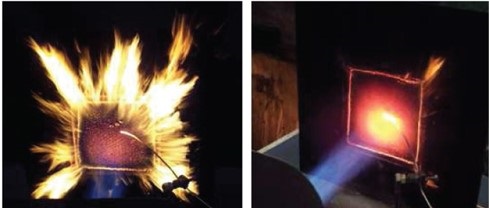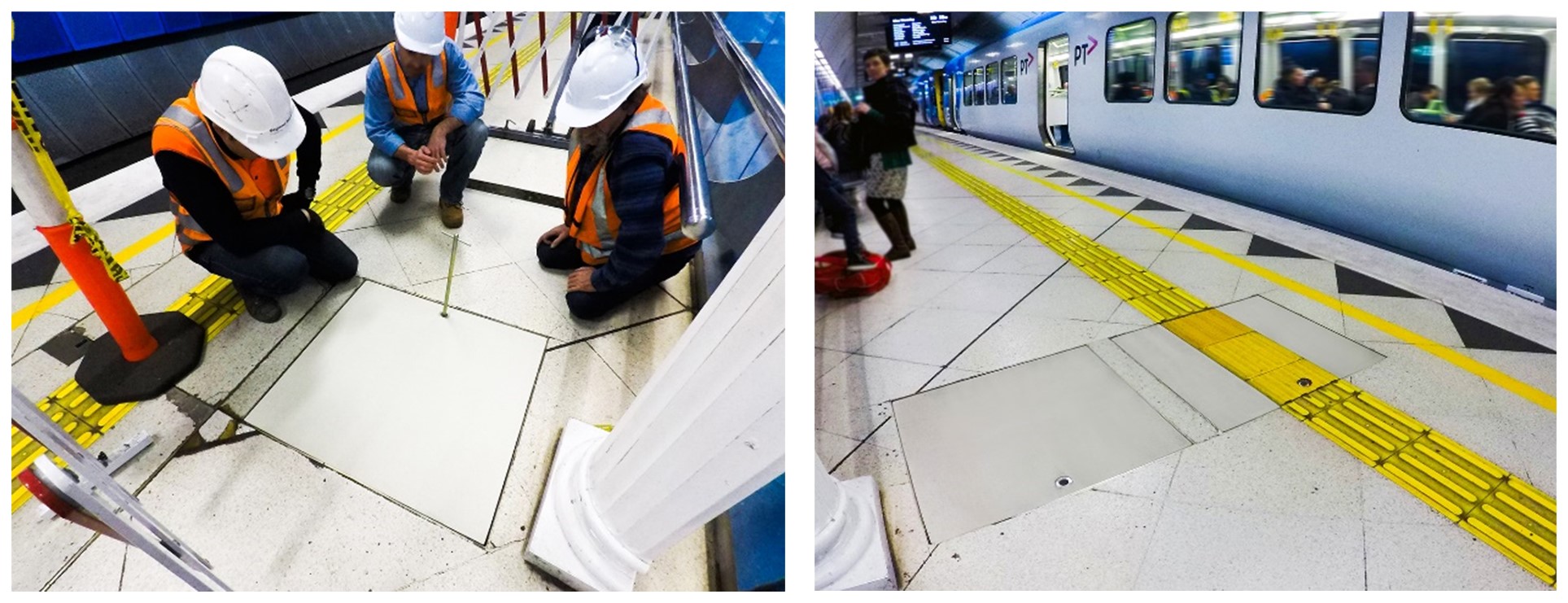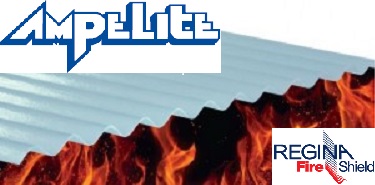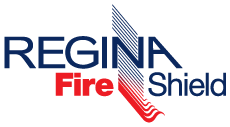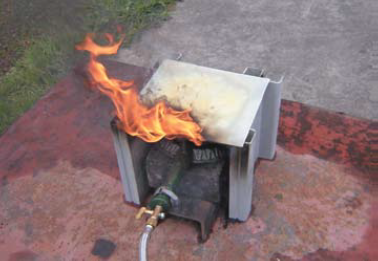In environments where escape from fire becomes difficult, and when fire can be produced by the burning of hydrocarbon fuels, the standards for acceptable fire behaviour of materials become ever more stringent.
Regina developed a test rig for comparing burn behavior of different formulations, based on work done by Prof. Geoff Gibson, Professor of Composite Materials Engineering at the University of Newcastle upon Tyne.
Comparing a composite surface after testing in our test rig for 60 minutes at a surface temperature of 1100°C, with a similar composite surface including FireShield® illustrates the retention of surface structural integrity provided by the FireShield®.
(a.) unprotected fibreglass (b.) protected fibreglass
A designer must consider initial cost, weight and strength, especially in air, sea and land vehicles, where extra weight increases operating cost over the life of the vehicle, and can add to the cost of the infrastructures required.
The use of FireShield® as part of a composite surface layer for multi-material panels, both structural and non-structural, can provide two critical properties under these conditions:
-Structural integrity of the surface underneath
-Self Extinguishing
A SEM scan of the protected surface after the burn, conducted by the Royal Melbourne Institute of Technology (RMIT) showed a fine network of ceramic fibres, holding the surface together.
Resin behaviour under fire attack.
When exposed to the high temperature fire studied in the present work, the vinyl ester resin burnt quickly leaving behind the bare fibre cloth. As shown in Figure 13a, within approximately the first five minutes of a fire test, the resin combusted to produce a strong yellow flame and a significant amount of smoke.
Depending on the thickness of the front face laminate, this burning period could last up to about fifteen minutes, after which the resin was consumed and the flame disappeared, see Figure 13b.
Figure 13: Burning of resin at early stage of a fire test
(13a) After 5 mins
(13b) After 15 mins
Visual inspections were conducted on the exposed surfaces of the protected and unprotected samples after fire tests. As shown in Figure 21a and 21c, the Fireshield® veil burnt into a thin and white layer which, in the case of fibreglass glass face laminate, appeared to have protected the fibreglass reinforcement behind it from melting.
(Fig 21a.) protected fibreglass (Fig 21b.) unprotected fibreglass
(Fig 21c.) protected basalt (Fig 21d.) unprotected basalt
Figure 21: Exposed surface of composite laminates after fire tests
References
6. ISO 834-1-1999, Fire Resistance Tests – Element of Building Construction, Part 1: General Requirements.
7. EN 1363-2-1999, Fire Resistance Tests – Part 2: Alternative and Additional Procedures


